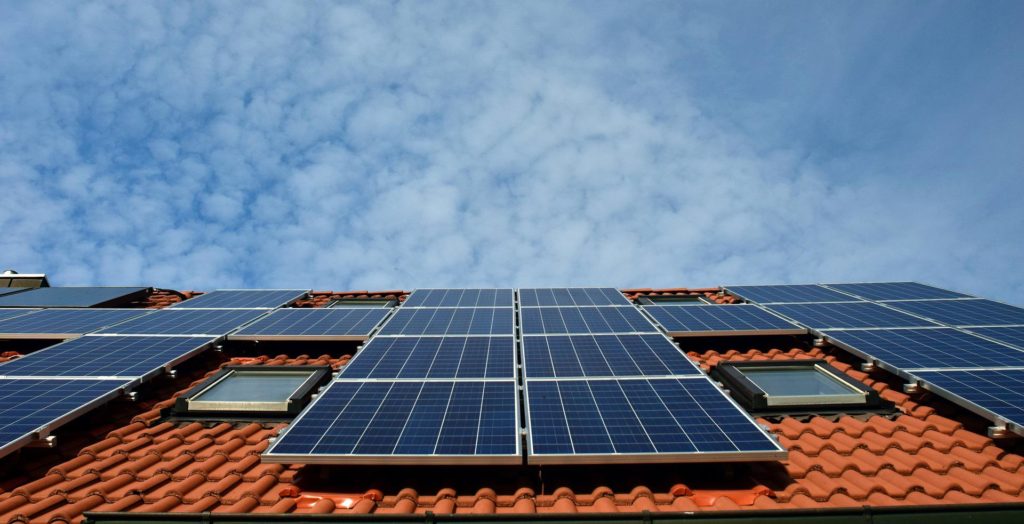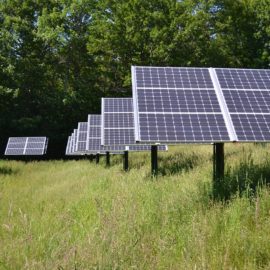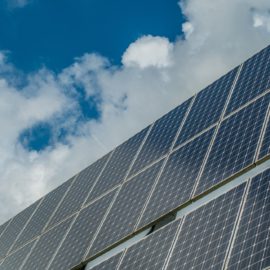
Hurricanes and other storm can cause power outages and there is a new model to help.
A LaPlace church that served food and organized volunteers after Hurricane Ida will be outfitted with solar panels in the first phase of a $40 million project to create dozens of “resilience hubs” across southeast Louisiana, officials said Tuesday. Supporters of the far-reaching project hope that they can eventually equip up to 100 churches and community organizations with solar power and batteries. The first batch includes the New Wine Christian Fellowship and nine other locations. One goal is to create places where residents can get cool and charge up after a hurricane. But supporters also hope to cut electricity bills throughout the year and to transform community groups like churches into disaster responders. ”We are our best selves in the wake of these storms,” said Matthew Candler, a member of the group leading the solar power project, Together New Orleans. “This is a chance for us not just to survive but to thrive and provide for one another in those moments – and by the way, every single day, when our power bills drop by close to 80%.” Ida showed how important it is to have nearby staging areas after a storm, but also how fragile electrical grids can be. Government leaders and community groups are increasingly looking to create “microgrids” powered by solar or natural gas to keep the power on during and after disasters.
nola.com
“This little light of mine” welcomed those come to the announcement of this project.
St. John the Baptist Parish President Jaclyn Hotard and other officials gathered inside New Wine’s sanctuary on Tuesday morning were greeted by a choir singing “This Little Light of Mine.” The performance preceded an announcement by the Greater New Orleans Foundation that it is donating $1 million to kickstart what’s been dubbed the “community lighthouse” project. Together New Orleans, an advocacy group made up of churches and community organizations, began planning the lighthouse project in the first month after Ida. The foundation’s money will be applied to the $4.6 million pilot phase of the project, which will equip 10 churches and community organizations with solar power and backup battery storage over the next year. The Greater New Orleans Foundation’s donation will backstop the lighthouse project, but with only half of the money raised for the pilot phase, Together New Orleans is still figuring out how to finance other sites. One potential funding source is the $1 trillion bipartisan infrastructure deal signed into law by President Joe Biden last year. Broderick Bagert, the lead organizer with Together New Orleans, said he hopes that the pilot phase will serve as a demonstration for federal funders. Other sources could include tax credits and savings from solar power generation, he said.
The damage from IDA brought this need to the attention to the Parish and beyond as the New Wine became a community center.
One potential funding source is the $1 trillion bipartisan infrastructure deal signed into law by President Joe Biden last year. Broderick Bagert, the lead organizer with Together New Orleans, said he hopes that the pilot phase will serve as a demonstration for federal funders. Other sources could include tax credits and savings from solar power generation, he said. When the next disaster strikes, the community lighthouse project will allow New Wine and other organizations to respond even faster, said Bernard. Supporters say the power hubs will have a host of benefits after a storm. The electricity will turn churches into cooling centers, allow people to charge their phones and keep the power flowing for food preparation. The project calls for more than physical infrastructure. Supporters also hope to create standing disaster response teams at the churches and community groups that are selected for the program.
After the power loss from Ida, the City began to think around the same lines.
After Ida debilitated local power grids for days or weeks, government officials in New Orleans began considering how to install backup power on more public buildings. But Hotard said it’s also crucial to create fallbacks for community groups like New Wine. “There’s only so much that government can do, and we rely on our faith-based communities, our nonprofits to come in and fill those voids,” said Hotard. In New Orleans, the goal is for the entire population to live within a 15-minute walk of one of the lighthouses. The community health nonprofit Crescent Care has received a $500,000 grant from Direct Relief to turn one of its buildings into this type of community hub. First Grace United Methodist Church in Mid-City, Bethlehem Lutheran Church in Central City and Household of Faith in New Orleans East were highlighted in a briefing document for the New Orleans City Council that showed renderings of their roofs with solar panels.
Solar is preferred over generators so that the added emissions are minimized.
Bagert said the group selected the solar and battery combination over alternatives like natural-gas powered generators because of the cost advantages and in recognition of the threat that climate change poses to south Louisiana. Candler noted that the price of solar power generation and backup power for nights or cloudy days have plummeted over the past decade. Supporters of the initiative believe its benefits will extend well beyond the first days after the storm. The solar panels will be used to offset buildings’ power consumption year-round, cutting their electrical bills. A portion of the savings will be applied toward ongoing maintenance. Backers also hope that the installation of dozens of solar-and-battery setups, while small compared to the state’s overall electricity demand, will catalyze an industry that has struggled in Louisiana compared to other southern states.
A good idea and one all of us could think about with our worship centers.



